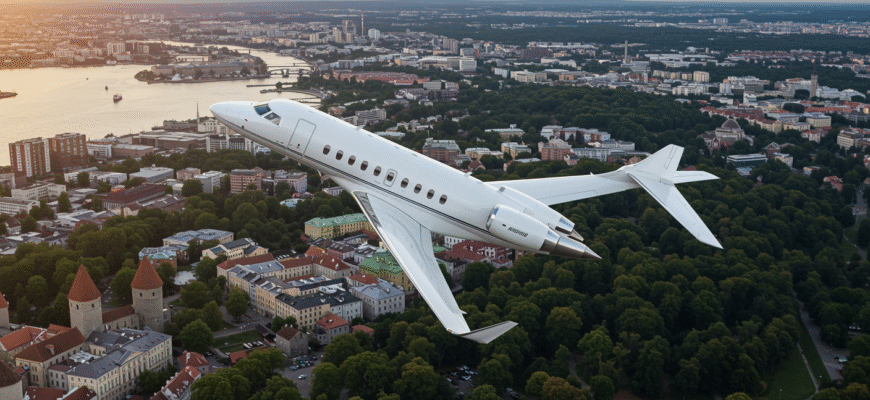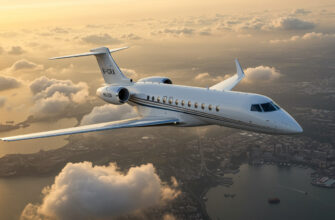Tallinn didn’t used to be on anyone’s shortlist for private jet hops. But that’s changing—fast. Tucked into a sweet spot between Scandinavia and Russia, this Estonian capital has become a buzzy choice for those who like to fly fast and land quietly. Gone are the days when jet-setters only looked to London or Paris for business or fun. Tallinn is now seeing a steady climb in private aviation traffic—but not for the reasons you might expect.
What’s pulling the private crowd? Start with location. Tallinn sits beautifully between Western Europe and Asia, serving as a smart pivot point for both corporate and leisure jet travelers who want maximum reach with minimum fuss. But beyond convenience, there’s something else: a layer of luxury that doesn’t scream. Think less glitz, more edge. This isn’t Saint-Tropez—you won’t find sky-high table minimums or paparazzi flashes. That’s exactly why it works.
And the crowd? It’s a mix. Gracefully dressed tech founders deboarding Falcons at 2 a.m. for discreet board meetings. A group of bachelorettes in matching jackets clinking Champagne before hopping back to Berlin. Politicos weaving in and out during EU council sessions. Everyone comes with a mission—and Tallinn handles them all without flinching.
Why Tallinn Is Emerging As A Jet-Set Hotspot
You could trace Tallinn’s jet-set rise to its location alone, but that would miss the point. People aren’t just passing through—they’re choosing to stay, to celebrate, to launch new ventures. The city’s vibe is intentionally low-key, which makes it the perfect escape route if you need a break from the hyper-visibility of more hyped-up cities.
- Strategic for East/West travelers: Crossing into Scandinavia, Russia, or Central Europe? Tallinn’s positioning saves hours in direct routes—and that matters when every minute feels like it’s being invoiced.
- Achingly discreet: Unlike Mykonos or Nice, Tallinn’s luxury scene plays it cool. Less flash, more privacy. Wealth here tends to blend in, not beacon out.
- Making space on the map: As Paris struggles with air traffic bottlenecks and London gets swamped in regulations, charter operators are watching Tallinn’s steady rise with real interest.
The takeaway? It’s not just a flyover city anymore. It’s a flex for those who don’t need everyone to watch them win.
Who’s Flying Here And Why It Matters
The manifest says it all. This city’s private jet bookings read like a cocktail of clout and chaos. One day it’s a digital nomad billionaire landing for a spontaneous 48-hour retreat. The next, it’s a birthday charter filled with Estonian candies and matching pink sweat suits.
A few typical flyers putting Tallinn on their compass include:
| Type of Flyer | Why They’re in Tallinn |
|---|---|
| Tech Founders | Estonia’s e-residency program has made Tallinn a digital hub. Founders bounce in for meetings, startup summits, or to close deals in privacy. |
| Stealth Entrepreneurs | High-stakes players looking to keep a low profile—Tallinn offers quiet efficiency with none of the big-city drama. |
| Bachelorettes on Budget | Yes, even private jet budgets have tiers. Vibey groups on empty-leg deals flock in for Insta-soaked weekends and Baltic hangovers. |
The surge is also seasonal. Expect traffic to triple during EU summits, stockholder meetings, and tech melt-ups. Local FBOs are quietly building capacity for exactly this swell—and winning loyal flyers in the process.
Key Airports Near Tallinn For Private Aviation
The smoothest landings come through Lennart Meri Tallinn Airport (TLL), which is practically a VIP red carpet for charter flyers. Located barely 15 minutes from the city, TLL is fitted with dedicated FBOs, long runways, and just enough bureaucracy to feel secure—without being overwhelming. It’s also a solid bet for rare aircraft, as the ground crews are used to handling everything from modest Citations to hefty Gulfstreams.
When summer rolls in and space heats up, charters sometimes get rerouted to minor fields like Pärnu or Kärdla. These airfields can handle lightweight jets and work well for tourists hitting Estonia’s resort islands. But be warned—full-size jets and complex itineraries still belong in TLL’s hands.
Regulatory And Clearance Realities
Estonia doesn’t play loose when it comes to borders—but it plays smart. Expect strong tech integration across customs, immigration, and flight management. The country embraced digital before it was cool, and it shows. Many jet travelers breeze through using scanned passports and preloaded manifests—and crew often pre-clears passengers while they’re still airborne.
A few clearance quirks worth keeping in mind:
- Schengen flights within the EU? You’ll likely skip full customs, even with pets or pricy cargo.
- Non-EU arrivals? Tallinn’s reputation for speed applies here too—agents are efficient, and some ground handlers even offer concierge-level escort through clearance.
- AI flagging: Yes, it exists. If you’re routing in from high-risk zones or on a new charter ID, the system might auto-flag. It won’t ruin your plans, but it might delay boarding just long enough to notice.
Best advice? Pre-clear everything, and let your onboard team handle the rest. They usually already know the drill.
Last-Minute Flight Availability And Real-World Wait Times
Think you can book a jet and be wheels up in two hours? It’s possible, but not for everyone. Realistically, it depends on three key things: how small your plane is, how well-connected your broker is, and what’s sitting on the tarmac when you ask.
Last-minute requests in Tallinn work best when:
- You’re flexible on departure time by +/- 60 minutes.
- Your operator already services the Baltic region regularly (less paperwork, faster crew calls).
- You’re flying on a Citation, Lear, or anything under 10 seats—easier to turn around than heavier, snootier aircraft.
Large-cabin or long-range jets like a Falcon 7X or Gulfstream G650? Odds improve if you’re booking from a preferred list or willing to fly empty-leg style.
End of day: Tallinn does last-minute better than most cities in its size class—just don’t expect miracles if your dream jet is parked in Paris and your clock’s already ticking.
Picking the Right Jet for Your Trip
Trying to match the jet to your vibe and itinerary can be trickier than picking the perfect playlist for takeoff. Tallinn’s private terminals may give you discretion and flexibility, but your aircraft choice will double down on how your trip actually feels — or costs.
Aircraft Type Breakdown
Not all jets are created equal — and not all of them are forgiving on fuel or mood. For short hops, light jets like the Citation II are the go-to. Sure, it’s not exactly the Four Seasons in the sky, but when you’re flying under three hours, do you really need a flying palace? It’s cost-effective, quick, and widely available around Tallinn.
If you’re after legroom and style with a dash of power, midsize jets hit the sweet spot. The Learjet 60 delivers speed with that edge-of-your-seat climb rate. Need to crash mid-flight after a draining boardroom battle? Falcon 2000 gives you that napable flat seating that could trick you into thinking you’re in a boutique hotel suite.
Now, when it’s transatlantic? When Tallinn to NYC or Dubai is on the cards? You want the likes of Gulfstream G550 or Global 6000. Long-range kings. Fly ten hours straight, WiFi streaming, meals designed by Baltic chefs, maybe your dog curled at your feet. If you’re burning PTO in the clouds, might as well do it right.
What Your Itinerary Demands
It may not seem like a leap, but consider Tallinn to Berlin vs. Tallinn to Ibiza. One might take just 90 minutes; the other needs solid pressurization and strong fuel management. On longer legs, comfort and cabin air matter more than sleek interiors.
Then there’s the structure of your trip:
- One-way? Expect “positioning fees” if no return is booked.
- Roundtrip? Sometimes cheaper per leg, especially in slower seasons.
- Multi-leg? Eat budgets fast. Overnight parking charges, repositioning flights, and downtime fees can sneak up.
How Vibe Impacts the Ride
If your crew’s planning a high-decibel bachelorette logic-defying weekend in Mykonos with glowsticks and prosecco pop-offs, you need a bird with mood lighting, cabin speakers, and a solid galley. Some jets even come pre-loaded with AV gear — think neon-lit party at 36,000 feet.
But if it’s a silent, work-friendly flight with WiFi strong enough for Zoom calls and passive-aggressive Excel edits, layout matters more. Bench seating? Hard pass. Go with aircraft that offer individual seats, sound-dampened cabins, and maybe even a spa-water fridge if you’re that person.
Flying with pets? Not all charters treat them equally. Ask for pet policies early. Some operators roll out red carpet for your Pomeranian. Others… just don’t.
What It Costs to Fly Private in Estonia
Most folks want to know the price tag first. Flying private out of Tallinn isn’t bargain-bin, but it doesn’t always cost the GDP of a small nation either. That said, sticker prices are just the beginning. It pays to know what’s hiding behind onboard Champagne and silk eye masks.
What’s the Real Range?
Flying to Stockholm in a light jet runs €5,500–€8,000 one-way. Not bad for slipping quietly into Sweden in just under an hour.
Midsize takes you deeper — €12,000–€18,000 gets you to most of Western Europe. Your crew, luggage, and gourmet cheese all ride in style.
For the long haul, like Tallinn to New York or Dubai, pack an espresso and deep wallet. It’s easily €60,000+ one way. That covers fuel, time, and the kind of jet that would give Tony Stark jet envy.
Hidden Fees You’ll Only Hear About From Operators
The part that air charter websites rarely whisper about:
- Ground handling fees spike during summer — think tech summits, boat shows, and Baltic sunset chasers.
- Pre-dawn departures? Add after-hours movement fees.
- De-icing charges in winter can nudge your bill up by thousands, depending on aircraft size.
- Hangar space in Tallinn is limited during events — surge pricing applies without much warning.
Bottom line? Always request an all-in charter quote. That way you’re not decoding operator invoices mid-hangover or mid-crisis.









